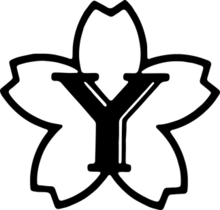Sega Toys
Sega Toys Co., Ltd. (株式会社セガトイズ, Kabushiki gaisha Sega Toizu) was founded when Yonezawa Toys, Japan's largest post-war toy manufacturer, was absorbed into Sega in 1991 as Sega-Yonezawa.
 | |
Native name | 株式会社セガトイズ |
|---|---|
Romanized name | Kabushiki gaisha Sega Toizu |
Formerly | Sega-Yonezawa (1991–1998) |
| Kabushiki gaisha Subsidiary | |
| Industry | Toys |
| Predecessor | Yonezawa Toys |
| Founded | February 1991 |
| Headquarters | Asakusabashi, Taito-ku, Tokyo, Japan |
Area served | Worldwide |
Key people |
|
| Products | |
| Revenue | ¥100 million |
Number of employees | 89[2] |
| Parent | Sega Holdings |
| Subsidiaries | Sega Toys (HK) Co., Ltd. |
| Website | www |
Sega Toys have created toys for children's franchises such as Oshare Majo: Love and Berry, Mushiking: King of the Beetles, Lilpri, Bakugan, Jewelpet, Rilu Rilu Fairilu, Dinosaur King, and Hero Bank. Products by Sega Toys released in the West include the Homestar and the iDog. Sega Toys also inherited the Sega Pico handheld system and produced software for the console.[3]
History


Yonezawa Toys (米澤玩具, Yonezawa Gangu) (known also as Yone or simply Y) was founded in the 1950s in Tokyo. It was one of Japan's largest and most prodigious post-war toy manufacturers and an early participant in the growing radio control market. It is a former subsidiary of Union Carbide as toy division.
The company and focused on the production of thousands of different electrically operated and mechanical toys through the early 1970s. Some were branded not as Yonezawa but as STS. It is unclear as to the origin of the STS label, but it is presumed to be that of an importer. Yonezawa briefly dabbled in radio control in the mid-1980s with the introduction of the 1/10-scale Wave Hunter buggy, sold in North America as the Monogram Lightning.
Under Sega’s leadership, Yonezawa Toys was briefly known as Sega-Yonezawa until the Yonezawa branding was dropped entirely in April 1998.[4] Once Sega Sammy Holdings was formed, Sega Toys was reorganized under Sega’s entertainment contents business.
Since the early 2000s, Sega Toys markets itself distinctively from the Sega brand, with some occasional collaboration between the two. An example of their collaboration is Sega and Sega Toys producing the UFO Catcher prize games jointly, where Sega manufactures the arcade equipment, while Sega Toys produces the prizes.
Diapet / Cherryca Phenix
Diapet (ダイヤペット, Daiyapetto) is the name of a series die-cast toys produced by Yonezawa Toys of Japan after that company took over the Cherryca Phenix (チェリカ・フェニックス, Cherika Fenikkusu) brand. They were mostly produced in the 1:40 scale. While Yonezawa is best known for producing tinplate toys of particular accuracy and in the scale of 1:24-1:18, Diapet toys are smaller die-cast replicas. Their quality and realism made them popular for Asian children and collectors alike, however, this commercial success failed to be replicated in the United States. The word "pet" is the Japanese equivalent of "small" or "cute." Diapet toys continued being produced through the 1990s.
Other popular die-cast brands to come out of Japan include Asahi Model Pet, Miniature Pet, Micropet, Cherryca Phenix, Tomica and Collectoy. Of them, Tomica (from Tomy of Japan) is the best-known to US collectors.
References
- Co.,LTD., SEGATOYS. "President Message - Company Profile - SEGA TOYS". www.segatoys.co.jp.
- Co.,LTD., SEGATOYS. "Corporate Information(Access Map) - Company Profile - SEGA TOYS". www.segatoys.co.jp.
- https://www.segatoys.co.jp/company/english/pdf/2014history-en.pdf
- "Company Profile - History of SEGA TOYS". segatoys.co.jp.